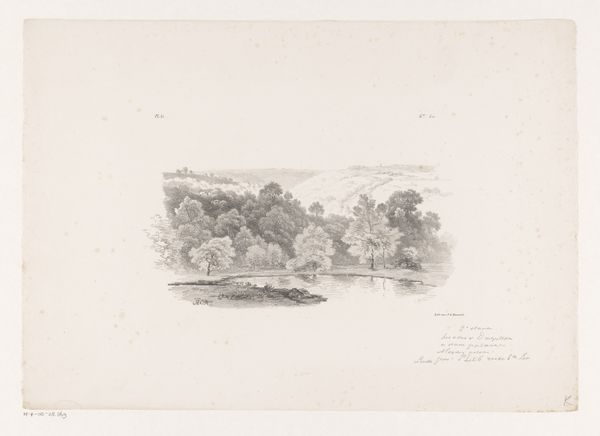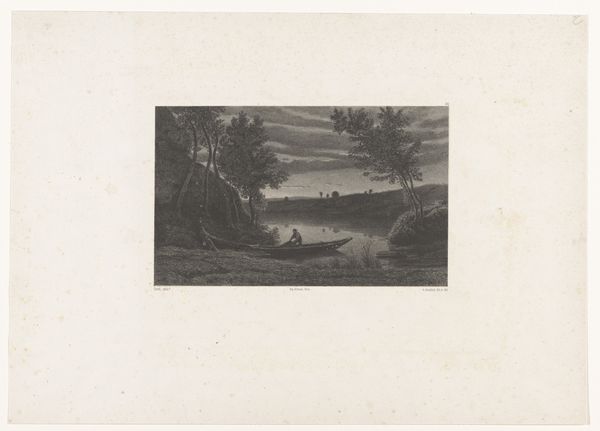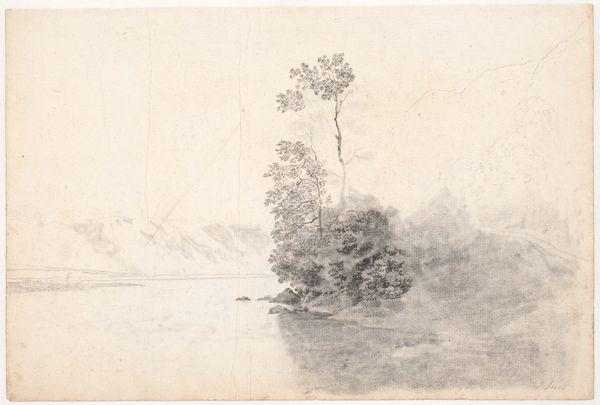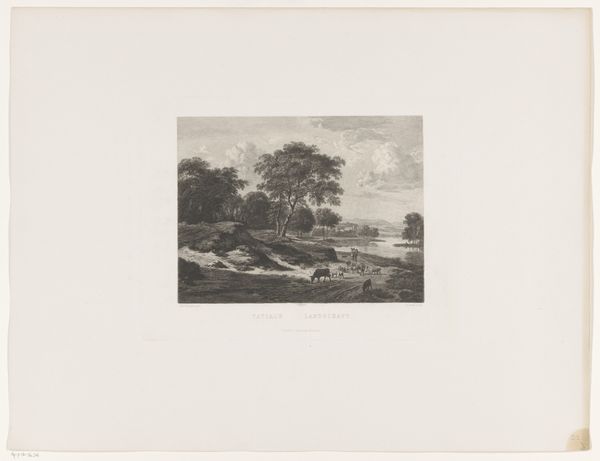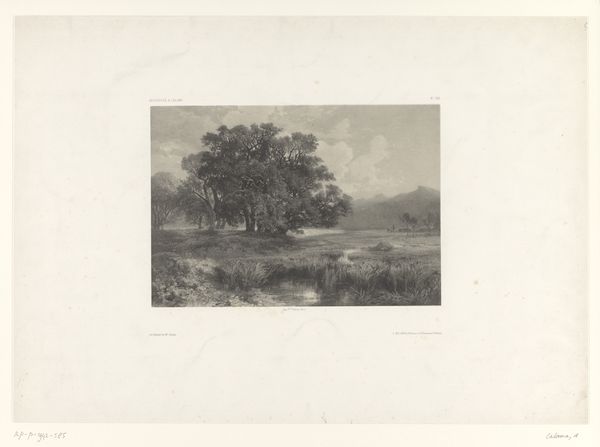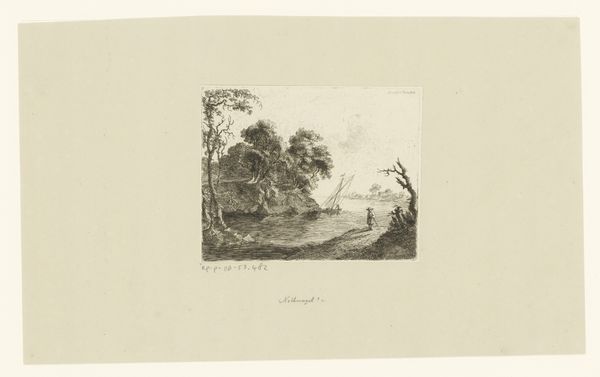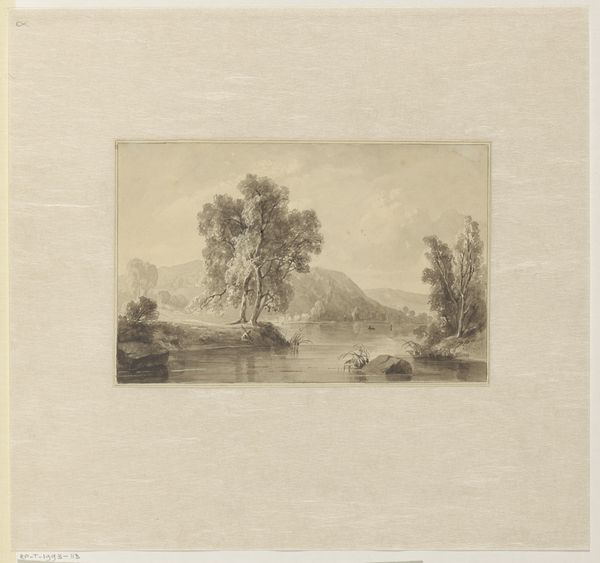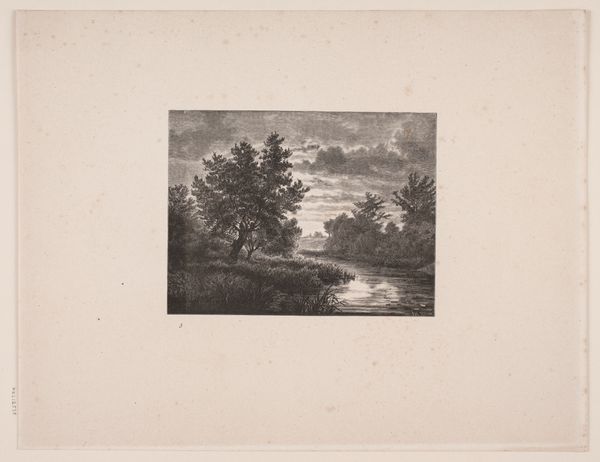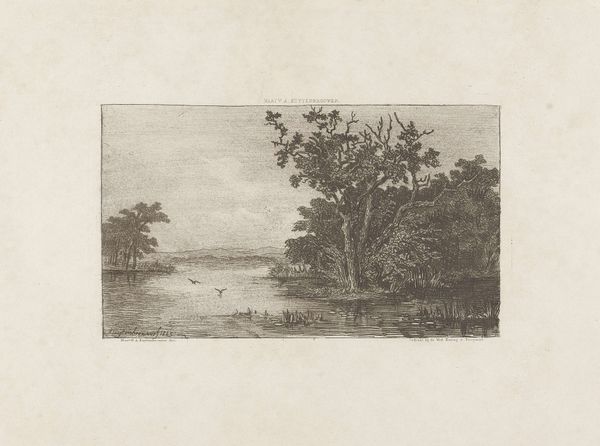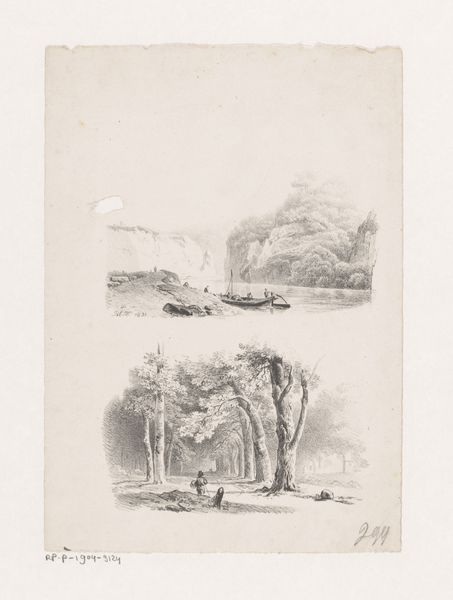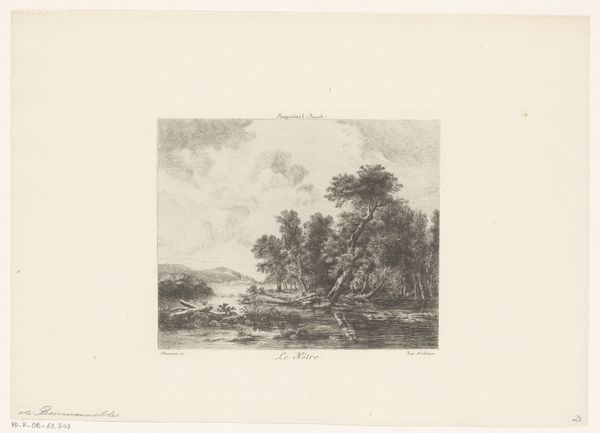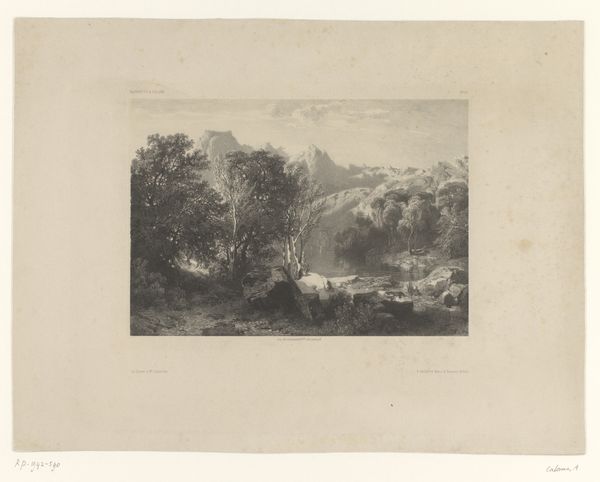
drawing, pencil
#
drawing
#
landscape
#
river
#
romanticism
#
pencil
#
cityscape
#
realism
Dimensions: height 345 mm, width 480 mm
Copyright: Rijks Museum: Open Domain
Curator: It evokes such a serene stillness. A quiet harmony exists in this detailed drawing, a sort of balance created with tone and subtle textures. Editor: That's a lovely observation. What we're looking at is a pencil drawing by Barend Cornelis Koekkoek, titled "Heuvellandschap met rivier, landweg en huizen," created around 1844-1845. It’s currently held at the Rijksmuseum. And considering its history, let's consider Koekkoek's influence and the broader romantic and realist movements impacting the landscape. His process must have demanded significant fieldwork. Curator: Yes, but there's more than that— the structure guides our eyes along that river, toward the houses nestled on the hillside. Note how he varies the strokes of pencil to render gradations of tone! It seems an ode to the interplay between light and form in rendering spatial depth and recession. Editor: Absolutely! Now, in examining his choices of medium -- paper and pencil. And his technique reveals insight to this early modern relationship to art production, which in turns informs his view of the environment and culture. The use of graphite shows the social impact on natural materials, while capturing that historical moment in landscape drawing through consumer practice and environmental changes. Curator: But do you see what Koekkoek attempts? He structures an image and sets off feeling! How can you not observe the artist manipulating elements toward pure visual aesthetic? This work achieves visual order through shape, space and rendering -- technique drives form! Editor: I can acknowledge both its beauty and how its context affects its interpretation. Let us note what lies ahead: landscape changed from romantic vision into an exploited economic opportunity, where resources become means for a painting—reflecting his practice mirrors impending modernity when society viewed artistic landscape depiction was related to property management, production, extraction. Curator: It is remarkable to me how effectively Koekkoek renders light within a monochromatic medium! What seems most exciting lies inside of this work where forms meet light for emotional significance, rather than how those objects and their creation are tied back to material practices outside. Editor: Indeed. Ultimately this piece brings together formal elements but lets see the way nature will get industrialized...a compelling reflection both for how they looked once...and for our changing landscape that’s shaped via this material.
Comments
No comments
Be the first to comment and join the conversation on the ultimate creative platform.
